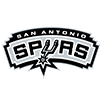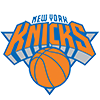A big part of being a basketball nerd -- besides tidying mother's basement and adjusting one's spectacles frequently, I mean -- a big part of being a basketball nerd is practicing self-restraint. While there's a lot of money to be made -- and page views to be generated -- by merely yelling aloud that Team X is a sure-bet-you-can-write-it-down-and-sent-it-to-your-grandma to win the NBA title, this isn't how sport works. At any given point, there's a likelihood that Team X will win the the title, but there's also a likelihood that Teams Y and Z will win it. I realize that, by saying so, I'm probably preaching to the choir, but sometimes the choir is the only one really listening in the entire church.
This, of course, is just one example of practicing self-restraint. Another concerns tempering one's own enthusiasm when it comes to the advanced statistics about which nerds gets so excited in the first place.
Consider a case from baseball. In 2001, researcher Voros McCracken published his work "Pitching and Defense: How Much Control Do Hurlers Have?" at Baseball Prospectus. McCracken's findings implied that major league pitchers had little control over the outcome of balls put into play against them. In other words, no matter the quality of the pitcher -- be it Pedro Martinez or whoever happened to be pitching for the Royals that day -- once a pitch was hit fair (and not over the fence) by an opposing batter, there was about a 30% chance that
A big part of being a basketball nerd -- besides tidying mother's basement and adjusting one's spectacles frequently, I mean -- a big part of being a basketball nerd is practicing self-restraint. While there's a lot of money to be made -- and page views to be generated -- by merely yelling aloud that Team X is a sure-bet-you-can-write-it-down-and-sent-it-to-your-grandma to win the NBA title, this isn't how sport works. At any given point, there's a likelihood that Team X will win the the title, but there's also a likelihood that Teams Y and Z will win it. I realize that, by saying so, I'm probably preaching to the choir, but sometimes the choir is the only one really listening in the entire church.
This, of course, is just one example of practicing self-restraint. Another concerns tempering one's own enthusiasm when it comes to the advanced statistics about which nerds gets so excited in the first place.
Consider a case from baseball. In 2001, researcher Voros McCracken published his work "Pitching and Defense: How Much Control Do Hurlers Have?" at Baseball Prospectus. McCracken's findings implied that major league pitchers had little control over the outcome of balls put into play against them. In other words, no matter the quality of the pitcher -- be it Pedro Martinez or whoever happened to be pitching for the Royals that day -- once a pitch was hit fair (and not over the fence) by an opposing batter, there was about a 30% chance that it would become a hit.
This was, at first, the most exciting of notions -- one so revolutionary that, when it was borne out by evidence, amounted to basically the nerd equivalent of a religious experience. Yet, subsequent work on the subject has revealed that, while McCracken's initial theory is still, in fact, largely the case, there do appear to be pitchers who, for one reason or another, are able to influence batted balls. Not crazily, mind you, but enough so that it shows up in the data.
As a result of these later findings, baseball nerds the world over were forced to re-calibrate their understanding of defense-independent pitching (as McCracken called it). What, at one point, appeared to be an absolute was now littered with footnotes and provisos. Pitchers who induced infield fly balls or threw cutters might outperform their expected ERAs. Manny Parra, on the other hand, would not.
Essentially, the process re-affirmed what everyone already knew in their hearts: there are no easy answers when you're dealing with humans; there are data on the one hand and qualitative analyses on the other. Use both, or suffer the consequences.
It was with considerably less acclaim and "evidence" than McCracken's 2001 announcement that I suggested this past December that at-rim shooting (a) leads pretty directly to higher shooting percentages and (b) probably tends to stabilize pretty quickly. In other words (re: the latter half of that sentence), if a player is shooting 50% of his shots at the rim a month into the season, there's a fair chance he'd be doing the same two months into the season. And three. And four.
With that in mind, this past December I submitted six names to the reader: three players who were taking (at that time) a higher percentage of their shots at the rim than in the previous season, and three players who were taking a lower percentage of the same. The idea was that the first group would be players to target; the latter, players to avoid.
That was the idea. The reality of the situation, as per usual, is much more complicated. Below are the six players in question. For each player, I've included the percentage of his at-rim shots (of all shots taken) from last season ('09-'10), as of December 12th (when I wrote the article), and currently. I've also included each player's field-goal percentages for those same time periods.
Players Who Were Taking More Shots at the Rim (By Volume)
Player:Kris Humphries, NJ
At-Rim Percentage ('09-'10/Dec. 12/Current): 38.6% / 46.8% / 50.6%
Field-Goal Percentage ('09-'10/Dec. 12/Current): 44.1% / 55.2% / 53.1%
Player:Darko Milicic, MIN
At-Rim Percentage ('09-'10/Dec. 12/Current): 23.0% / 30.8% / 37.2%
Field-Goal Percentage ('09-'10/Dec. 12/Current): 49.0% / 42.0% / 47.2%
Player:Hakim Warrick, PHO
At-Rim Percentage ('09-'10/Dec. 12/Current): 43.6% / 50.6% / 44.6%
Field-Goal Percentage ('09-'10/Dec. 12/Current): 48.2 / 55.2% / 51.7%
Players Who Were Taking Fewer Shots at the Rim (By Volume)
Player:J.J. Hickson, CLE
At-Rim Percentage ('09-'10/Dec. 12/Current): 63.9% / 34.7% / 45.5%
Field-Goal Percentage ('09-'10/Dec. 12/Current): 55.4% / 44.3% / 44.5%
Player:Carl Landry, SAC/NOR
At-Rim Percentage ('09-'10/Sacramento/Nawlins): 51.6% / 31.5% / 33.3%
Field-Goal Percentage ('09-'10/Sacramento/Nawlins): 53.6% / 49.2% / 52.8%
Player:O.J. Mayo, MEM
At-Rim Percentage ('09-'10/Dec. 12/Current): 26.9% / 11.5% / 16.0%
Field-Goal Percentage ('09-'10/Dec. 12/Current): 45.8% / 40.2% / 40.7%
In almost each case, there's a lesson to learn, but it's not necessarily the easy one. Humphries' season, for example, has been a success, and his at-rim percentage has increased since December. But his field-goal percentage has decreased then. Why?
Darko Milicic is taking way more of his shots at the rim this year than last, but his field-goal percentage is about the same. Why?
Hakim Warrick's percentage of shots at the rim regressed almost entirely to last year's level. Why?
In each case, we could probably hazard a guess. Humphries' numbers haven't fluctuated that much, so could easily be a product of variance. Darko's sample from 2009-10 was from a different team and with fewer minutes per game. Hakim Warrick is, uh, Hakim Warrick.
The point is that each case appears to be an exception to something I thought was a rule -- or at least was like a rule. If the rules exists, however, it doesn't manifest itself in these examples. That makes the examples no less interesting, but makes the "rule" considerably less helpful.






































